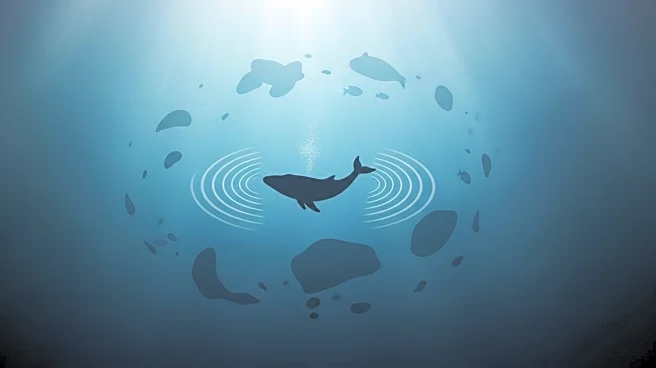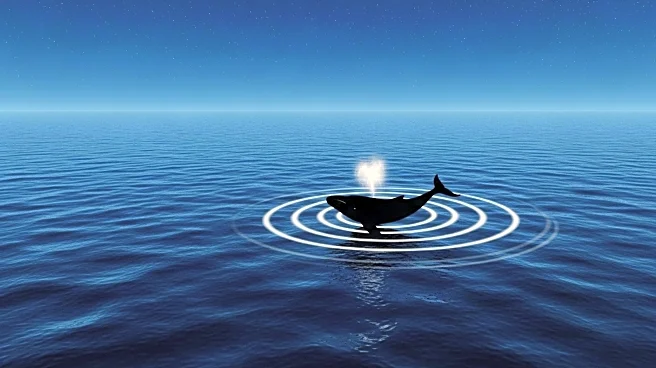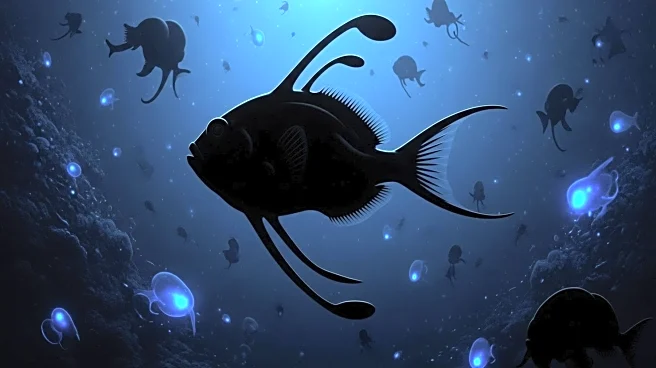What's Happening?
The 52-hertz whale, first detected in 1989, has intrigued scientists due to its unique call frequency, which is much higher than typical whale calls. Researchers from the Woods Hole Oceanographic Institution have tracked this whale for over three decades, noting its solitary call across the Pacific Ocean. Despite speculation about the whale possibly having a companion, there is little scientific evidence to support this claim. The whale's call, initially thought to be unique, may be part of a broader whale community dialect, as suggested by recent research.
Why It's Important?
The study of the 52-hertz whale offers insights into marine biology and acoustic communication among whales. Understanding this whale's call could lead to discoveries about whale species and their interactions. The narrative of the 'lonely whale' has captured public interest, highlighting the importance of preserving marine life and ecosystems. The potential discovery of a hybrid whale could provide new information on whale evolution and species interaction, impacting conservation strategies and scientific research.
What's Next?
Future research may focus on confirming the existence of a hybrid whale and understanding its implications for whale communication and species classification. Scientists may continue to monitor the 52-hertz whale's calls to gather more data on its behavior and interactions with other whales. Documentaries and public interest could drive further exploration and funding for marine research, potentially leading to new discoveries about oceanic life.
Beyond the Headlines
The story of the 52-hertz whale raises questions about animal communication and loneliness, challenging assumptions about solitary creatures. It also highlights the role of documentaries in bringing scientific mysteries to public attention, influencing cultural perceptions of marine life. The whale's saga underscores the importance of acoustic research in understanding and preserving biodiversity in the oceans.










